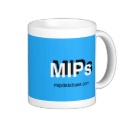|
|
Reference type: Journal
Authors: Rushton GT, Karns CL, Shimizu KD
Article Title: A critical examination of the use of the Freundlich isotherm in characterizing molecularly imprinted polymers (MIPs).
Publication date: 2005
Journal: Analytica Chimica Acta
Volume: 528
Issue: (1)
Page numbers: 107-113.
DOI: 10.1016/j.aca.2004.07.048
Alternative URL: http://www.sciencedirect.com/science/article/B6TF4-4D3WH71-6/2/3012071623176d91c77eaa4ed086ab65
Abstract: The Freundlich isotherm (FI) has previously been shown to be useful in modeling the binding properties of non-covalent molecularly imprinted polymers (MIPs). The advantage of the FI is that it is a heterogeneous binding model that can accommodate and measure the heterogeneity inherent in MIPs. However, it is often difficult to verify whether the FI is an appropriate binding model for a particular MIP because only a narrow portion of the binding isotherm is experimentally measurable. This study takes a critical examination of whether the FI is an appropriate binding model for MIPs and explores its limitations in characterizing a (+)-cinchonine (CN) imprinted polymer and a non-imprinted polymer (NIP). A wider portion of the binding isotherm can be examined by systematically measuring a series of isotherms at different polymer concentrations. This strategy verified that FI can yield an accurate measure of the heterogeneity in the cinchonine MIP and the NIP. However, in cases of extremely high polymer loading, saturation behavior was observed, and the FI yielded inaccurate measures of the binding properties even though the experimental isotherm appears to be well modeled by the FI. Further, these studies indicate that the FI accurately predicts the heterogeneity index for more homogeneous compared to heterogeneous polymers over a wider concentration range but is subject to considerable error as saturation conditions are approached. These studies demonstrate the importance of correctly applying the FI to the lowest concentration portion of the binding isotherm that is experimentally measurable
Template and target information: (+)-cinchonine, CN
Author keywords: molecular imprinting, Freundlich isotherm, polymers, cinchonine, analytical methods, adsorption isotherms
|


 mipdatabase.com logo mug
mipdatabase.com logo mug







 mipdatabase.com logo magnet
mipdatabase.com logo magnet







 MIP Workshop MIP2010 Tote bag
MIP Workshop MIP2010 Tote bag






